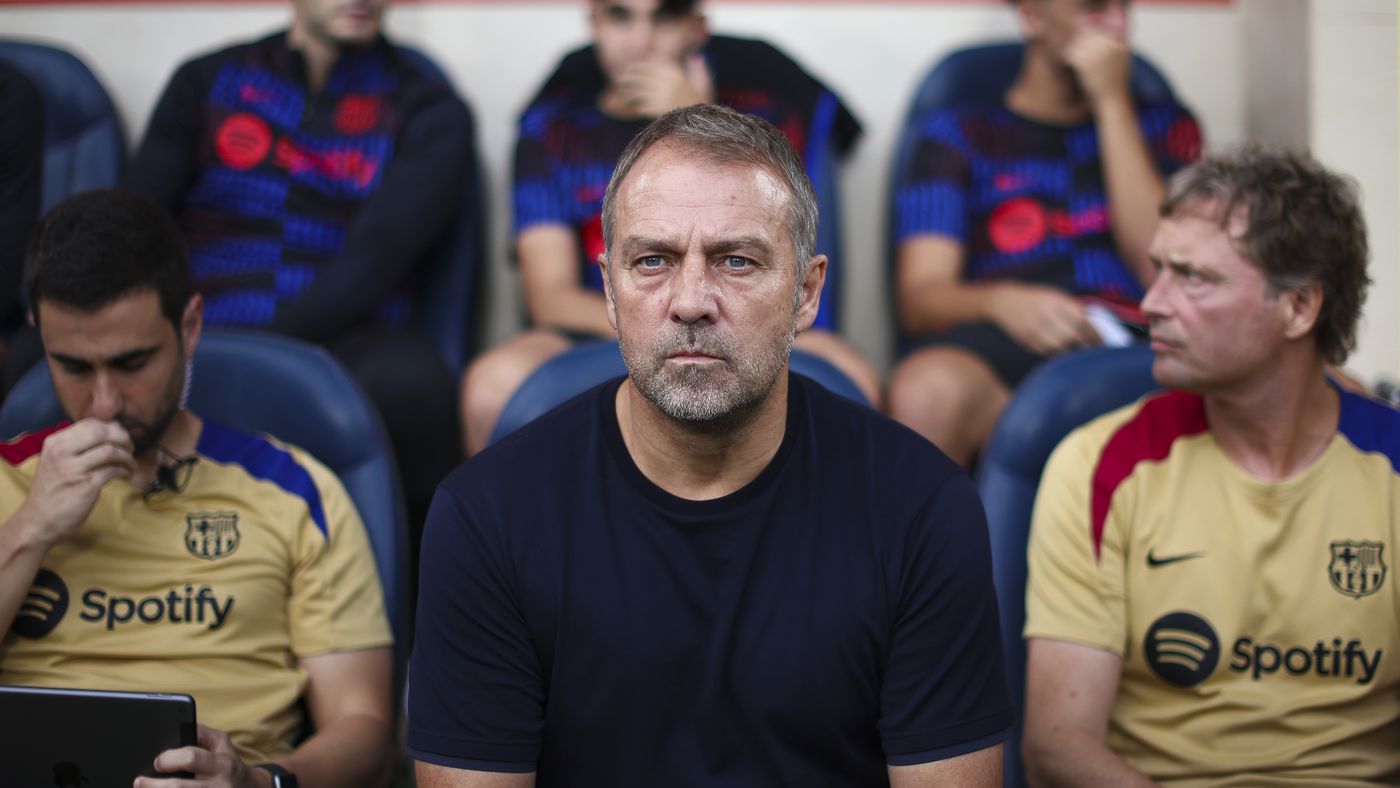Published
2 weeks agoon
By
Joe Pee
Barcelona is on the brink of a tactical evolution under the guidance of Hansi Flick, and although it’s still early days, the changes he’s introducing are already evident. Flick’s preseason with Barça featured only four games, but those matches revealed crucial insights into his vision for the team. So, how exactly is Flick trying to change Barcelona? Let’s break down five key tactical trends we’ve seen so far.
One of the most significant changes under Flick is a focus on positional flexibility, especially compared to the more rigid system used by his predecessor, Xavi. During his tenure, Xavi’s Barcelona became predictable in terms of shape and movement. Flick, however, has reintroduced variety.
In the preseason matches, Flick’s team often lined up with a double pivot that could transform into a back three during buildup or morph into a single pivot with one midfielder pushing up between the lines. This flexibility keeps opposing teams on their toes, forcing them to constantly adjust their defensive approach. Players are now required to adapt to different roles throughout the match, adding a new layer of tactical depth that was missing in Xavi’s system.
With Flick’s focus on looser positional play comes more opportunities for players to interchange and create space. Flick’s approach encourages movement between the lines, with wingers cutting inside and midfielders rotating to create space. This adds fluidity to Barça’s attack, reminiscent of the early days under Xavi, when movement and rotations were more prevalent.
In contrast to the rigidity that developed toward the end of Xavi’s tenure, Flick’s system promotes a dynamic style of play. Players move, rotate, and make counter-movements, all aimed at confusing defenders and creating gaps to exploit. This shift not only enhances creativity but also makes for a more entertaining style of football.
One of the standout features of Flick’s tactical approach is the emphasis on central overloads. This strategy involves crowding the middle of the pitch with several players—midfielders, wingers, and even forwards—who operate in close proximity to one another. This creates numerical superiority in crucial areas and helps Barça break through defensive lines with central passes.
Under Xavi, Barcelona often relied on wide wingers who hugged the touchline, but Flick’s wingers are instructed to drift inside, allowing for more central passing combinations. This not only makes Barcelona less predictable but also creates more immediate attacking threats since central areas are statistically more dangerous than wide ones.
Barcelona’s defensive style under Flick also shows some key developments, particularly in how they press after losing the ball. Flick, like many modern German managers, is a proponent of counter-pressing (gagan pressing), a system in which players immediately pressure the opponent after losing possession to regain control quickly.
In preseason, Barcelona’s counter-pressing showed positive signs, with midfielders like Marc Casado playing a pivotal role in recovering the ball. However, this approach can leave the team vulnerable. Flick’s commitment to quick, vertical transitions often sees Barcelona commit several players forward, which could expose them to counter-attacks if the ball is lost in dangerous areas. Maintaining defensive structure while pressing aggressively will be a key challenge for Barça this season.
Perhaps one of the most defining characteristics of Flick’s Barcelona is the emphasis on hard work and energy, especially when defending. Flick’s system demands that players press aggressively, maintain high lines, and constantly move without the ball. While Xavi also required intense off-the-ball work, Flick’s approach seems to offer more flexibility, allowing Barcelona to adapt to different opponents.
For example, against Manchester City in preseason, Barça opted for a more compact, zonal defense, focusing on blocking passing lanes rather than stepping out aggressively. However, against AC Milan, the team applied more pressure and played a higher line, showcasing the tactical variety Flick brings to the team.
This focus on work rate could determine which players thrive under Flick. Midfielders like Gavi, known for their relentless energy, may play a key role, while players with less defensive intensity, such as Pedri, may face challenges adapting to Flick’s demanding style.
Hansi Flick’s arrival at Barcelona signals a shift toward a more flexible, dynamic, and energetic style of play. His tactical approach focuses on positional fluidity, dynamic movement, central overloads, and intense counter-pressing—all aimed at making Barcelona more unpredictable and dangerous.
While the system comes with its risks, particularly in terms of defensive vulnerabilities, it’s clear that Flick is prioritizing creativity and fluidity over rigid structures. As the new season unfolds, Barcelona fans can look forward to an exciting and tactically evolving team, with Flick at the helm of this revolution.
Stay tuned for more insights into Barcelona’s squad and how individual players might adapt to this new system.

























